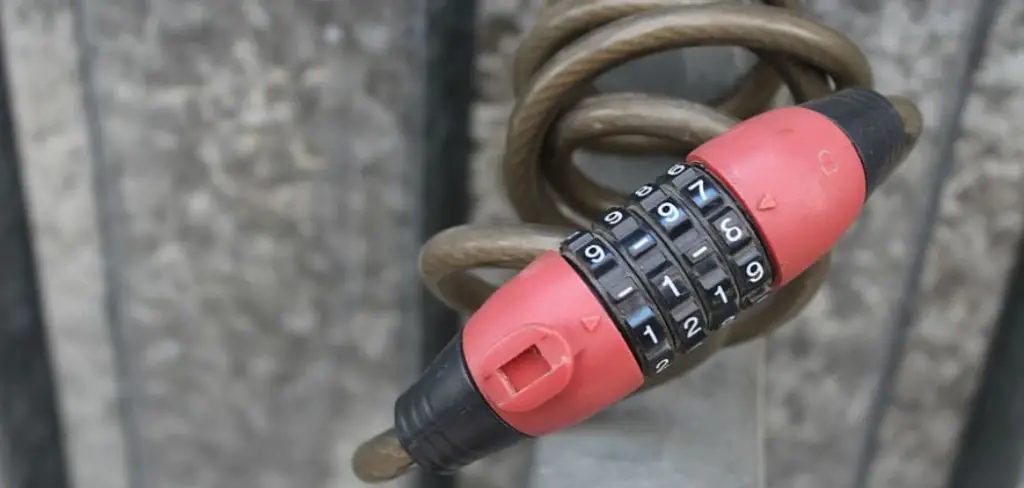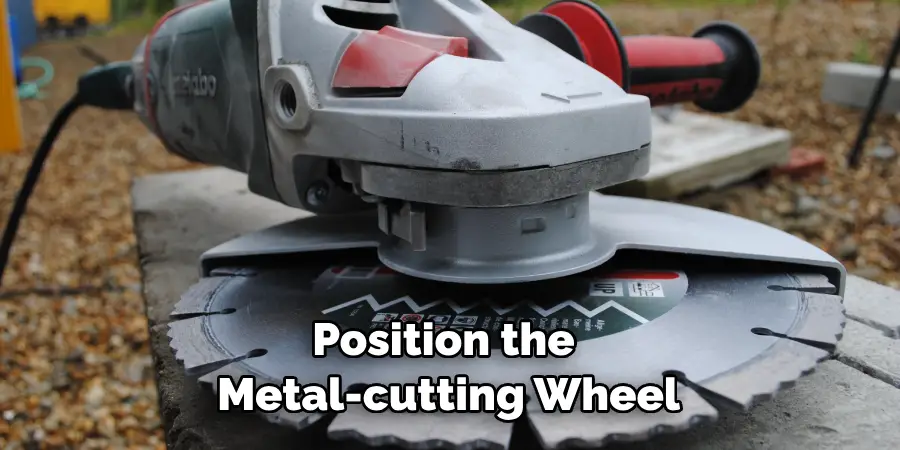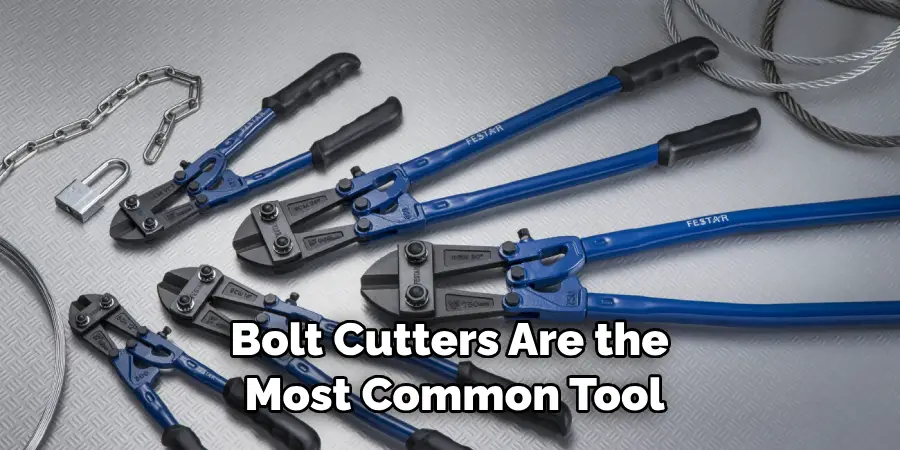When faced with the need to remove a cable bike lock, knowing how to cut it safely and effectively is essential. Cable bike locks offer a convenient way to secure your bicycle, but situations may arise where you need to remove them due to lost keys, forgotten combinations, or a need for replacement. In this article, we will explore the steps and techniques required on how to cut a cable bike lock.

From selecting the right tools to ensuring your safety and preventing damage to your bike, understanding the process of cutting a cable lock will equip you with the knowledge needed to handle such situations with confidence and precision.
The Emergency Situation For Cutting a Cale Bike Lock
It’s never an ideal situation, but in the event of an emergency, you may need to get your bike unlocked. Cutting a cable bike lock is not something you want to do on a regular basis, but it can be done with the right tools and knowledge. In this guide, we’ll walk you through step-by-step instructions for how to cut a cable bike lock.
First, you’ll need to gather the essential tools for cutting a cable bike lock. The most important tool is an angle grinder or Dremel tool with either a metal-cutting wheel or diamond tip disc. You’ll also need safety glasses and ear protection as well as some kind of lubricating oil or penetrating lubricant.
Before you start cutting, it’s important to make sure the bike is secure and not moving around while you work on it. Once everything is secure, apply some lubricant onto the cable lock and let it soak for a few minutes. This will help loosen up any rust or debris stuck in the mechanism of the lock.
Now, it’s time to start cutting. Position the metal-cutting wheel or diamond tip disc against the cable and begin to cut slowly in a circular motion. Make sure to apply steady pressure and go slow so you don’t damage the surrounding area or yourself with flying debris. Depending on the thickness of your cable, it can take a few minutes to cut through the entire thing.
Is It Safe to Cut a Cable?

If you are wondering if it is safe to cut a cable bike lock, the answer is yes. Cutting a cable bike lock does not damage your bike in any way and is an effective way of getting through a locked-up chain or locking bar.
Before attempting to cut the lock, however, be sure that you have the correct tools for the job: bolt cutters, diagonal cutters or a hacksaw. Depending on the type of lock you have, it is important to choose the right tool for the job.
Bolt cutters are best used for thicker locks, while diagonal cutters should be used for cable bike locks that are thinner and have a plastic coating. Diagonal cutters will provide a much cleaner cut than bolt cutters, as they require less effort to open the lock. A hacksaw can also be used for thicker locks, but it may take longer to get through the material.
When you are ready to start cutting your cable bike lock, make sure that you have a clear view of the area around the lock so that you don’t accidentally cut yourself or damage anything else.
Start by squeezing the cable cutters together and snipping the lock itself, making sure to avoid cutting into any other parts of your bike or surrounding items. Depending on the thickness of the lock, you may need to use several cuts in order to get through it.
10 Methods on How to Cut a Cable Bike Lock
1. Use Bolt Cutters
Bolt cutters are the most common tool used to cut cable bike locks. They are relatively inexpensive and can be found at most hardware stores. To use bolt cutters, you will need to position the blades of the cutter around the lock and apply pressure until it cuts through.

It is important to make sure that you have a good grip on the handles of the cutter as they can be quite powerful and could cause injury if not handled properly.
2. Use an Angle Grinder
An angle grinder is a power tool that can also be used to cut cable bike locks. It works by using a grinding disc to quickly cut through metal objects such as locks. However, it is important to note that this method should only be used as a last resort as it can create sparks that could potentially start a fire or cause damage to nearby objects.
3. Use Lock Picks
Lock picks are small tools that are designed to manipulate the pins inside of a lock in order to open it without using a key. While this method may work on some types of locks, it is not recommended for cable bike locks as they typically have more complex locking mechanisms which cannot be manipulated with lock picks.
4. Use Lock-Busting Spray
Lock-busting spray is a type of lubricant that can be used to weaken the internal components of a lock so that it can be opened without using a key or other tools. This method should only be used as a last resort as it could potentially damage the lock beyond repair and render it unusable in the future.
5. Use Heat
Heat can also be used to weaken the internal components of certain types of locks, including cable bike locks so that they can be opened without using any tools or keys. This method should only be attempted if you have experience working with heat sources such as blow torches or soldering irons, and extreme caution should always be taken when applying heat near combustible materials such as plastic or wood.

6. Call A Locksmith
If all else fails, you may need to call in professional help from a local locksmith who will have the necessary tools and experience needed to open your locked bike safely and securely without causing any damage to either your bike or its lock in the process.
7. Use An Electric Lock Pick Gun
Electric lock pick guns are another popular tool for opening locked bikes without having access to keys or other tools such as bolt cutters or angle grinders. The gun works by quickly vibrating individual pins inside of a lock until they become loose enough for them to move freely within their housing – allowing you to open your locked bike with ease!
8. Use A Hammer And Chisel
A hammer and chisel can also be used in combination with one another in order to break open certain types of cable bike locks – although this method should only ever be done as an absolute last resort due its potential for causing irreparable damage to both your bike’s frame and its locking mechanism!
9. Use A Sawzall Or Reciprocating Saw
Sawzalls (also known as reciprocating saws) are powerful electric saws that use rapidly moving blades in order to quickly cut through metal objects such as cable bike locks – although this method should again only ever be done as an absolute last resort due to its potential for causing irreparable damage both your bike’s frame and its locking mechanism!

10. Use An Air Chisel Or Air Hammer
Air chisels (also known as air hammers) are pneumatic tools that use compressed air in order rapidly chip away at metal objects such as cable bike locks – although, again, this method should only ever be done as an absolute last resort due to its potential for causing irreparable damage both your bike’s frame and its locking mechanism!
Some Common Mistakes On Cutting a Cable Bike Lock
When it comes to cutting a cable bike lock, there are some common mistakes that are often made. The most important thing is to use the right equipment for the job; using an angle grinder or saw may seem like a good idea but they can end up damaging the locks in the process.
It’s also important to ensure that you are wearing protective gear, such as gloves and safety goggles, in order to protect yourself from any potential injuries. Additionally, it is important to be aware of the position of the lock when cutting; if you are not sure which way it is facing, then take extra care to ensure that you are not cutting too far into the cable.
Conclusion
Overall, it’s easy to learn how to cut a cable bike lock if you know the right tools and techniques. Whether you’ve lost the keys or just don’t want to be weighed down with multiple locks, this is an invaluable technique to keep in your back pocket in case of an emergency. Also remember, clarity is key – make sure all your materials are clearly marked so you won’t get mixed up when getting ready.
Now that you have mastered the art of cutting a cable bike lock successfully, there’s no time like the present – grab your materials and give it a go! Who knows, you may end up becoming confident enough to tackle more complex tasks. Thanks for reading and good luck on your journey towards being a professional bike lock cutter!
